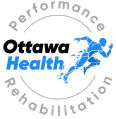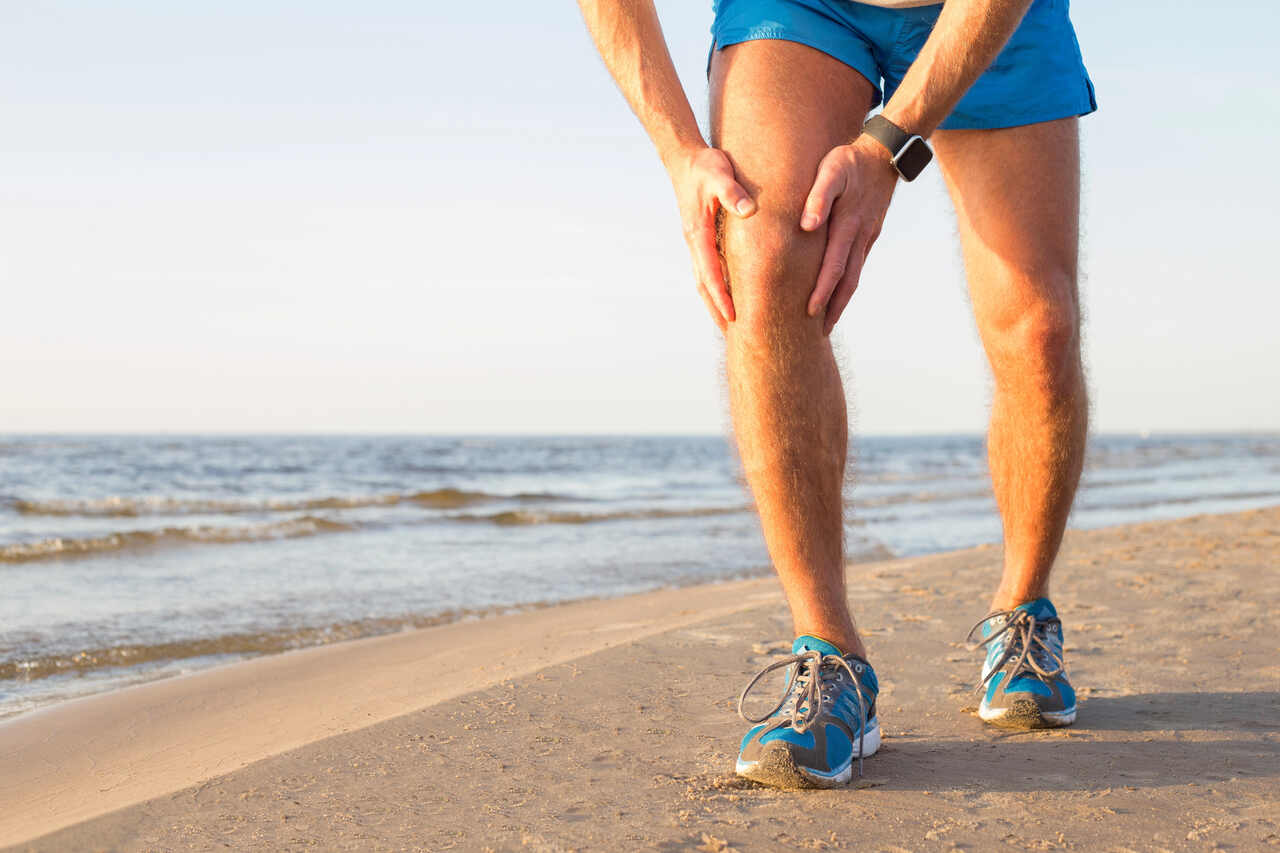The anterior cruciate ligament (ACL) plays a vital role in keeping the knee joint stable. ACL injuries are common, especially among athletes, and can severely impact knee stability and movement. Physiotherapy is key in managing and recovering from ACL injuries, helping restore strength, improve knee stability, and, in some cases, prevent surgery. In this post, we explore how physiotherapy aids ACL rehabilitation and why starting treatment early can make a significant difference.
Understanding ACL Injuries
The anterior cruciate ligament also known as the ACL is a very important ligament that is found in the middle of the knee joint. This ligament prevents the shin bone from sliding in front of the thigh bone. If this ligament gets injured, the knee can become slightly unstable, making it very difficult to perform daily tasks and physical activities.
There are different levels of ACL injuries, ranging from Grade 1 to Grade 3. Grade 1 is a minor increase in the laxity of the ligament i.e. a slight looseness in the knee joint, while Grade 3 is a complete tear of the ligament. A Grade 3 injury usually requires surgical intervention.
Benefits of Physiotherapy for ACL Rehabilitation
Physiotherapy can be very helpful when recovering from a Grade 1 or 2 injury, but also after surgical repair of a Grade 3 ligament injury. The aim of physiotherapy for ACL injuries is to prevent further injury and damage. As such, treatment focuses on restabilizing the knee joint and strengthening the muscles around the knee to make up for the loss of function in the ACL. Here’s how physiotherapy benefits people recovering from an ACL injury:
- Improved Knee Stability: Knee injuries often result from problems arising either at the hip or at the ankles. It is important to take the time to carefully assess the joints above and below the knee to make sure that these areas are not contributing to the instability of the ACL or knee joint. By focusing on improving control of the ankle and hip joints, physiotherapists can design a customized exercise regimen to address the instability that could have contributed to the ACL injury in the first place.
- Reduced Pain and Swelling: Physiotherapists use a variety of tools and other types of therapies to help reduce pain and swelling. Reduced pain allows individuals to feel more comfortable and confident in using the injured knee, which makes it easier to start rehabilitation exercises. Managing swelling helps restore mobility in the knee, allowing for smoother movement and less stiffness.
- Enhanced Muscle Strength: Physiotherapy not only improves knee stability but also focuses on building muscle strength in the surrounding areas, which can help support the injured ACL. Stronger muscles in the quadriceps, hamstrings, hips, and calves create a solid foundation for the knee to move without excessive strain. This increased muscle support can help individuals regain confidence in their knee’s functionality, which is especially important for those looking to return to sports or high-impact activities.
The Role of Exercises in ACL Physiotherapy
In most cases of ACL injury, physiotherapists focus on strengthening muscles that have a similar function to the ACL. This supports the knee by compensating for the weakened ligament, enhancing overall stability. Here’s how different targeted exercises help you recover from an ACL injury:
- Hamstring Exercises: It is important to train the hamstrings as they help prevent the shin bone from moving forward in front of the thigh bone. Exercises such as hamstring curls, bridges, and deadlifts focus on strengthening the hamstrings and posterior part of the leg while also working on stability and balance.
- Quadriceps Strengthening: In addition to the hamstrings, the quadriceps—the muscles at the front of the thigh—are important for knee function. Strengthening the quadriceps helps support knee extension and overall stability. Exercises like squats, leg presses, and step-ups are essential in ACL rehabilitation. These movements focus on building strength in the quadriceps without placing undue stress on the ACL, particularly in the early stages of recovery.
- Balance and Proprioception Training: Recovering from an ACL injury requires more than just muscle strength; it also demands the restoration of proprioception (the body’s ability to sense movement and position). Exercises like single-leg stands, using a balance board, and dynamic movements on an unstable surface help improve proprioception. This reduces the risk of re-injury and ensures that the knee can properly respond to changing movements during physical activities.
- Ankle Exercises: In some cases, it is also necessary to assess ankle function to make sure that the ankle is working optimally. This helps ensure that the knee doesn’t experience unnecessary stress. Exercises such as calf raises and ankle stability drills can be used to improve range of motion and strengthen the muscles supporting the ankle, reducing the likelihood of compensatory movements that could strain the knee.
Ideal Time to Start ACL Physiotherapy: Is Surgery Necessary?
Generally speaking, physiotherapy should begin immediately after an ACL injury. The initial stages after the injury focus on controlling inflammation and pain management. Your physiotherapist will also educate you on the mechanisms of injury so that you know what kinds of things to avoid, and how to prevent further injury.
If the injury is not too severe, physiotherapy sessions could help prevent the need for a surgical procedure. By educating clients on the mechanisms of injury, and how to prevent their condition from worsening, it is possible to prevent surgery. Working on the muscles that help support the ACL is crucial for those looking to avoid surgery. By developing good strength in the surrounding muscles and improving balance and control, in most cases, surgery can be avoided, provided that the ligament hasn’t torn completely.
In severe cases, surgery may be unavoidable. It is important to consult with your healthcare provider and physiotherapist before making decisions about your ACL injury treatment.
Physiotherapy Techniques Used in ACL Rehabilitation
Physiotherapists use a variety of techniques to aid in the recovery from ACL tears, each targeting different aspects of healing and rehabilitation. Here are some of the most commonly used methods:
- Soft Tissue Manipulation: This hands-on technique helps release tension, improve circulation, and reduce muscle tightness around the knee. By gently manipulating the soft tissues, physiotherapists can alleviate discomfort and promote healing in the surrounding muscles and ligaments.
- Ultrasound Therapy: Ultrasound therapy uses sound waves to penetrate deep into the tissues, stimulating blood flow and reducing inflammation. This treatment can speed up the healing process by promoting tissue regeneration and reducing pain, making it particularly effective in the early stages of ACL rehabilitation.
- Taping: Taping techniques provide additional support to the knee joint, helping to stabilize the injured area. This reduces strain on the ACL, allowing the individual to engage in exercises safely while promoting proper joint alignment during movement.
- Acupuncture: Acupuncture involves the insertion of thin needles into specific points of the body to relieve pain and promote healing. For ACL injuries, acupuncture can be used to reduce inflammation, improve circulation, and alleviate pain, supporting the overall rehabilitation process.
- Blood Flow Restriction Training: BFR is a newer method of rehabilitation that allows you to begin the rehabilitation process in a very safe and controlled manner during the earliest stages of the injury. It involves applying controlled pressure to restrict blood flow to the injured limb during specific exercises. By limiting blood flow, BFR enhances muscle strength and growth even at low exercise intensities, making it an effective and safe approach in the early stages of recovery when heavy resistance training may not be feasible.
- Client Education: One of the most important steps to help reduce pain, and swelling is to understand the mechanisms that irritate the injury. The first few treatment sessions have a special focus on educating the client on what kinds of things they should and shouldn’t be doing during the early stages the injury and recovery.
These techniques, when combined in a comprehensive physiotherapy plan, help people recover from ACL injuries by reducing pain, promoting tissue healing, and restoring strength and stability to the knee.
Can I Safely Return to Sports After Completing Physiotherapy?
The ultimate goal of physiotherapy is to allow clients to get back to the activities they love, including playing sports. While these injuries may be painful and take some time to heal, targeted exercises and therapy contribute to a more effective recovery, helping you get back to your daily activities and sports.
Find Your Footing Again
Recovering from an ACL injury doesn’t have to be overwhelming. With the experienced physiotherapy team at Ottawa Health: Performance and Rehabilitation, you can regain strength and stability in your knee. Our team is dedicated to creating personalized plans for your recovery. Contact us today to schedule your appointment and get back to the activities you love—pain-free.




